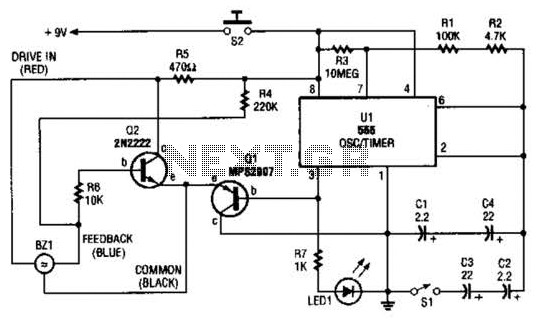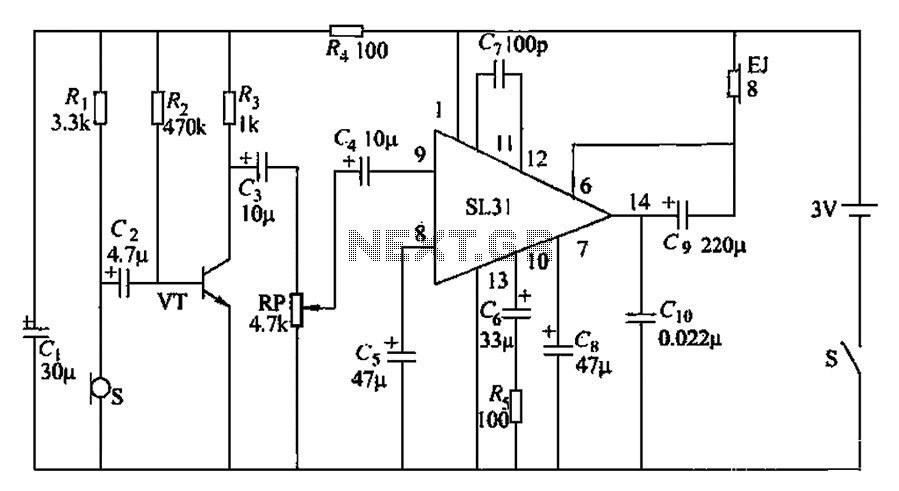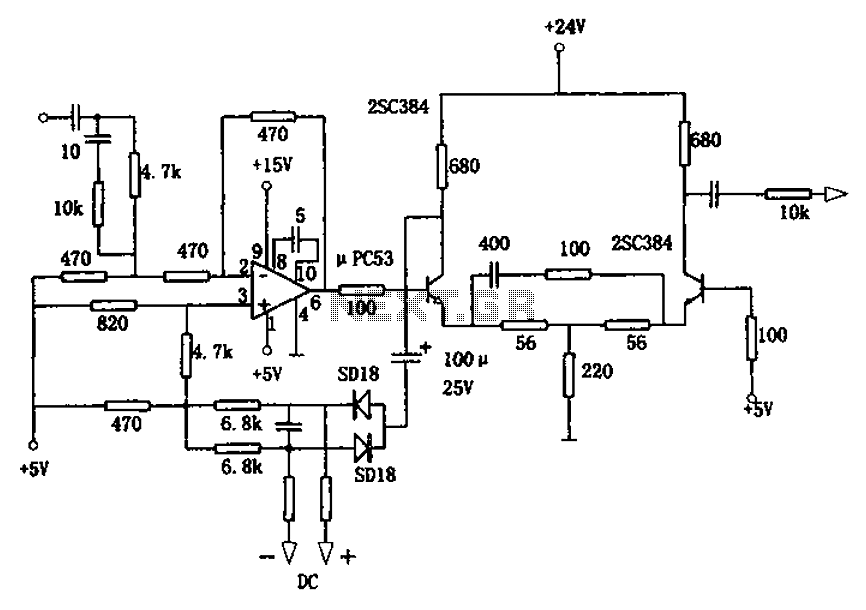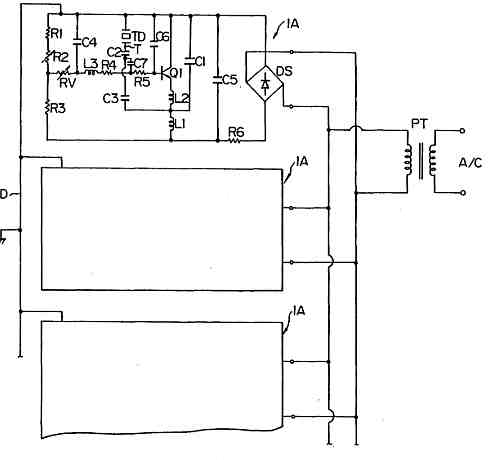
crystal tester circuit
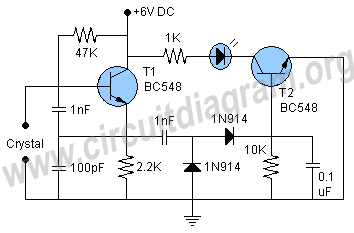
A highly beneficial project involving a crystal tester circuit, also known as an xtal tester circuit, constructed with only a few components. The circuit forms an oscillator that will only oscillate if the crystal under test is functioning properly. The output voltage from the oscillator will be rectified using 1N914 diodes and filtered by a 0.1 µF capacitor.
The crystal tester circuit operates on the principle of using a simple oscillator configuration, typically based on a transistor or an operational amplifier. The primary function of this circuit is to determine the operational status of a crystal oscillator by observing the oscillation output. In this design, the crystal under test is connected to the oscillator circuit. If the crystal is functional, it will allow the oscillator to generate a stable signal at its resonant frequency.
The output from the oscillator is a small AC voltage, which is then passed through a rectification stage utilizing 1N914 diodes. These diodes are chosen for their fast switching capabilities and are capable of handling the low voltage levels produced by the oscillator. The rectification process converts the AC signal into a pulsed DC signal.
Following rectification, the output is smoothed using a 0.1 µF capacitor, which acts as a filter to reduce voltage ripple and provide a more stable DC output. This filtered output can then be measured using a multimeter or an oscilloscope to ascertain the health of the crystal. If the crystal is defective, the oscillator will not produce any output, indicating that the crystal is not functioning correctly.
The simplicity of this circuit, requiring minimal components, makes it an excellent project for hobbyists and professionals alike. It serves as a practical tool for testing various crystal oscillators in electronic devices, ensuring that they are in good working order before installation or use. The compact design allows for easy integration into a larger testing setup or for standalone use.A very useful project of a crystal tester circuit or xtal tester circuit built with only few components the circuit form an oscillator that will only oscillate if the under test crystal is in good working condition and the oscillator output voltage will be rectified by 1N914 diodes and filtered by 0. 1uF capacitor and reach 🔗 External reference
The crystal tester circuit operates on the principle of using a simple oscillator configuration, typically based on a transistor or an operational amplifier. The primary function of this circuit is to determine the operational status of a crystal oscillator by observing the oscillation output. In this design, the crystal under test is connected to the oscillator circuit. If the crystal is functional, it will allow the oscillator to generate a stable signal at its resonant frequency.
The output from the oscillator is a small AC voltage, which is then passed through a rectification stage utilizing 1N914 diodes. These diodes are chosen for their fast switching capabilities and are capable of handling the low voltage levels produced by the oscillator. The rectification process converts the AC signal into a pulsed DC signal.
Following rectification, the output is smoothed using a 0.1 µF capacitor, which acts as a filter to reduce voltage ripple and provide a more stable DC output. This filtered output can then be measured using a multimeter or an oscilloscope to ascertain the health of the crystal. If the crystal is defective, the oscillator will not produce any output, indicating that the crystal is not functioning correctly.
The simplicity of this circuit, requiring minimal components, makes it an excellent project for hobbyists and professionals alike. It serves as a practical tool for testing various crystal oscillators in electronic devices, ensuring that they are in good working order before installation or use. The compact design allows for easy integration into a larger testing setup or for standalone use.A very useful project of a crystal tester circuit or xtal tester circuit built with only few components the circuit form an oscillator that will only oscillate if the under test crystal is in good working condition and the oscillator output voltage will be rectified by 1N914 diodes and filtered by 0. 1uF capacitor and reach 🔗 External reference
